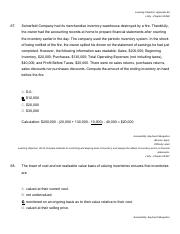This ratio calculates whether a company can pay its obligations on its total debt including the debt with a maturity of more than one year. If the answer to the ratio is greater than 1.0, then the company is not in danger of default. Net cash flow from operations is taken off the statement of cash flows, and current liabilities (which may or may not be an average) is taken off the balance sheet.
Investing activities include purchases of speculative assets, investments in securities, or sales of securities or assets. Both amounts are taken from a company’s cash flow statement (or statement of cash flows). A strong Free Cash Flow ratio is generally seen as a favorable financial indicator, signaling a company’s ability to grow, reduce debt, or provide returns to shareholders. It often suggests competent management and makes the company an attractive investment opportunity. For instance, using FCF for dividends suggests a shareholder-centric approach, while reinvestment indicates growth ambitions.
- Horizontal analysis shows a financial statement amount over a minimum of two years.
- It shouldn’t be used in isolation when you’re looking at the financial performance of your business but in conjunction with other metrics to give you a better idea of financial performance.
- Cash flow from operations (CFO), or operating cash flow, describes money flows involved directly with the production and sale of goods from ordinary operations.
- A higher FCF Ratio indicates that the company is generating more cash relative to its revenue.
- The company’s net income greatly affects a company’s free cash flow because it also influences a company’s ability to generate cash from operations.
CFI has published several articles on the most heavily referenced finance metric, ranging from what is EBITDA to the reasons Why Warren Buffett doesn’t like EBITDA. Below is an example of the unlevered FCF calculation from a real financial model. Most financial websites provide a summary of FCF or a graph of FCF’s trend for publicly-traded companies. This approach ignores the absolute value of FCF to focus on the slope of FCF and its relationship to price performance. Fortunately, most financial websites provide a summary of FCF or a graph of FCF’s trend for most public companies.
How Are Cash Flows Different Than Revenues?
Finding ways to reduce capital expenses for international products can help drive positive cash flow. Cash flows from financing (CFF), or financing cash flow, shows the net flows of cash used to fund the company and its capital. Financing activities include transactions involving issuing debt, equity, and paying dividends. Cash flow from financing activities provides investors insight into a company’s financial strength and how well its capital structure is managed. Free cash flow (FCF) is the money that remains after a company pays for everyday operating expenses and capital expenditures.
- There are several ways to calculate free cash flow, but they should all give you the same result.
- Follow Professor Wolfenzon’s lead to learn how the free cash flow method is applied to value firms.
- Free cash flow is calculated by subtracting capex and dividend payments from cash flow from operations.
- The cash flow statement acts as a corporate checkbook to reconcile a company’s balance sheet and income statement.
A company with falling or consistently low free cash flow might need to restructure because there’s little money remaining after covering the bills. Here’s how to calculate free cash flow, and why it matters to both businesses and investors. A contrarian investment strategy could be to take advantage of the depressed price to lower your cost basis, assuming you’re an existing shareholder. While AT&T still has a lot to prove, the stock looks tempting at its current levels. I would argue that the business is moving in the right direction as it seeks to reinvent itself in an age of otherwise commoditized product offerings. The company’s internal balance sheet will also show more detail and often displays a percent next to each dollar amount.
How to Derive the Free Cash Flow Formula
The purpose of the statement is to disclose information about the events that affected cash during an accounting period. The statement looks at the changes in the levels of cash directly, eliminating many of the weaknesses with the traditional estimate of cash flow. If a corporation considers its cash dividends paid to stockholders to be a requirement, the corporation could also subtract the required dividend amount. If the stockholders of the corporation in our example demand a constant dividend of $25,000 each year, the corporation’s free cash flow will be $35,000 ($200,000 – $140,000 – $25,000). If you don’t have a cash flow statement, you can use income sheets and balances for calculations.
The expense of the new equipment will be spread out over time via depreciation on the income statement, which evens out the impact on earnings. You can find the information needed to calculate free cash flow on a company’s statement of cash flows, income statement, and balance sheet. For example, a company with $100 million in total operating cash flow and $50 million in capital expenditures has a free cash flow total of $50 million. If the company’s market cap value is $1 billion, it has a ratio of 20, meaning its stock trades at 20 times its free cash flow – $1 billion / $50 million. This excess free cash flow can be used to give investors a return or invest back into the business.
Free Cash Flow Yield
This $45,000 could be put back into the business to purchase more inventory, or it could be used to issue Tim and his new investors a dividend at the end of the year. They want to see that the business operations are healthy and efficient enough to generate excess funds. The free cash flow formula is calculated by subtracting capital expenditures from operating cash flow. The OCF portion of the equation can be broken down and be calculated separately by subtracting the any taxes due and change in net working capital from EBITDA. Investors can see that over the past year AT&T has generated billions of dollars in free cash flow. In turn, the company has been able to use its cash flow to continue paying down debt as well as reward shareholders with a dividend.
As our infographic shows, simply start at Net Income then add back Taxes, Interest, Depreciation & Amortization and you’ve arrived at EBITDA. When free cash flow is positive, it indicates the company is generating more cash than is used to run the business and reinvest to grow the business. It’s fully capable of supporting itself, and there is plenty of potential for further growth. A negative free cash flow number indicates the company is not able to generate sufficient cash to support the business. However, many small businesses do not have positive free cash flow as they are investing heavily to grow their venture rapidly. Investors are interested in what cash the company has in its bank accounts, as these numbers show the truth of a company’s performance.
Free Cash Flow (FCF): Formula to Calculate and Interpret It
Because FCF accounts for changes in working capital, it can provide important insights into the value of a company and the health of its fundamental trends. Interest payments are excluded from the generally accepted definition of free cash flow. Investors can see that while revenue in the mobility business only what is the meaning of debit grew by 2% in Q3, adjusted EBITDA increased significantly. Management attributed the growth to increases in wireless services and higher average revenue per user (ARPU). Moreover, churn in AT&T’s postpaid phone division has improved significantly from last year, signaling lower customer turnover rates.
Capital Expenditures refer to the funds spent by the company on acquiring or maintaining fixed assets, such as property, buildings, or equipment. Dividends will be the base dividend that the company intends to distribute to its share holders. Here, capex definition should not include additional investment on new equipment.
However, even with the basic free cash flow calculation, it’s always worth pairing it with multiple types of calculation for better accuracy and to gain a deeper insight into how the business is performing. While FCF is an indicator of profitability and the health of your business, it’s important to remember that it shouldn’t be looked at on its own. Also worth noting that sometimes your business might be in negative cash flow for various reasons, the article will explore shortly. Free cash flow is left over after a company pays for its operating expenses and CapEx.
Luckily, investors are privy to the underlying trends of these operations and get a glimpse into the performance of the business during earnings season. Follow Professor Wolfenzon’s lead to learn how the free cash flow method is applied to value firms. Throughout the course, you will learn how to construct Excel models to value firms by completing hands on activities. The percentages on the common-size balance sheet (above) allow you to immediately see that the debt to total asset ratio is 62.5% (the amount of total liabilities was divided by the amount of total assets). When the financial statements are presented as percentages, they are referred to as common-size financial statements. They are “common size” since the reported percentages can be compared to the percentages for other companies even when the companies’ amounts are vastly different in size.
However, I would urge investors to keep an eye on free cash flow and debt levels in future quarters to ensure the long-term thesis is upheld. Additionally, during the Q3 earnings call, management raised its free-cash-flow forecast by $500 million to $16.5 billion for the year. This is a positive sign as it signals strong momentum going into the end of the year and management’s confidence that it will be able to continue paying down debt and “deliver additional shareholder returns.” Consumers have virtually no shortage when it comes to telecommunications providers. Whether it’s Verizon, T-Mobile, or AT&T (T -1.36%), people are barraged with a recurring carousel of commercials filled with celebrities and catchy jingles. These marketing tactics can make it challenging to discern one company’s product offerings over another.





